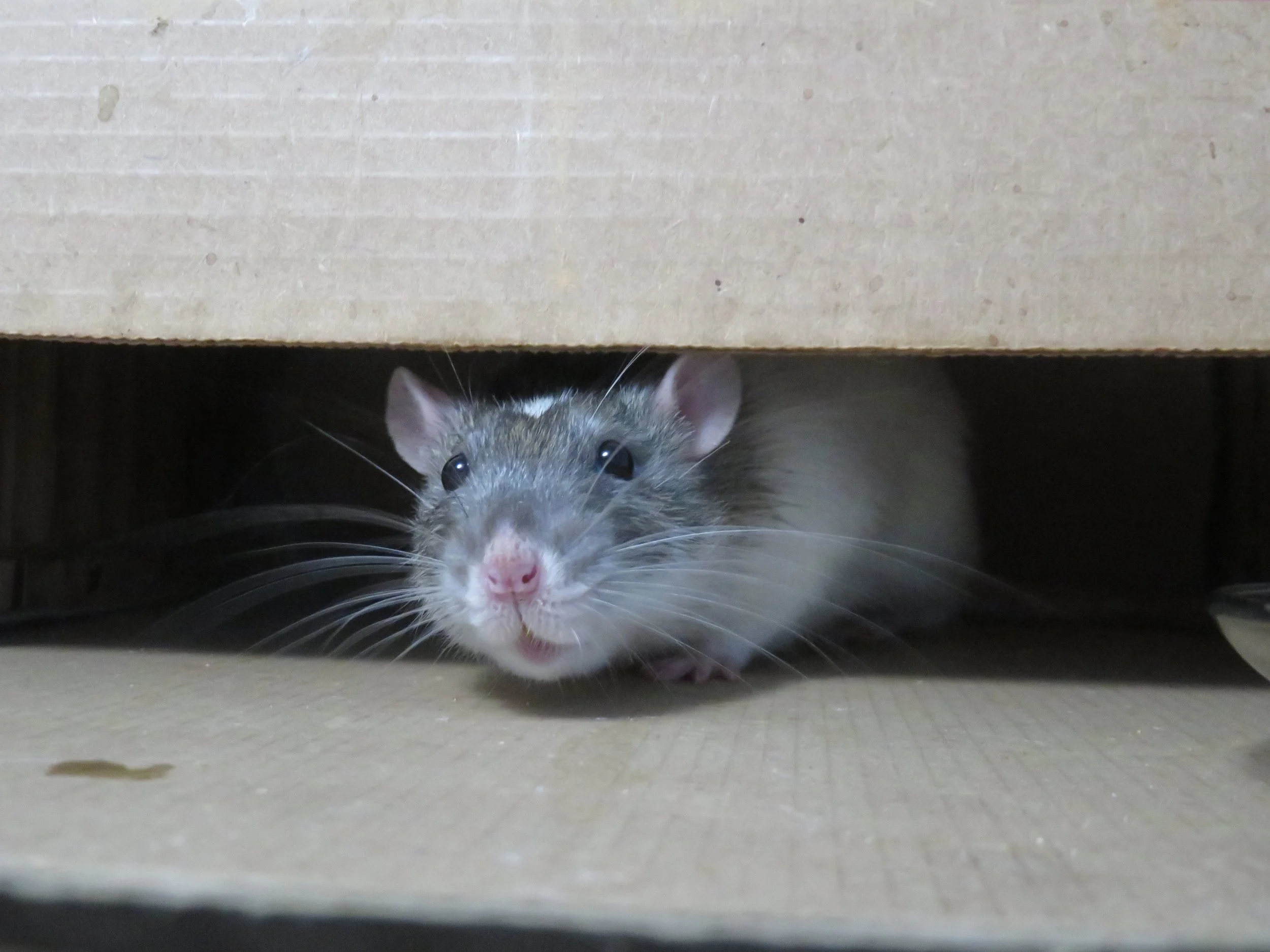A Nest in an Unfamiliar Place
How watching rats on security cams changed my sense of home
Image Credit: Unsplash
by Andrew Chapman
December 20, 2022
Looking down from our bedroom window toward the narrow alley between the garage and backyard, my wife and I saw the compost bin’s lid thrashing open and closed like Oscar the Grouch’s mouth. A trapped raccoon, we agreed. I went out to investigate, holding a broom and wearing a trench coat for armor. I poked open the lid with the broomstick. Two rats peered out, and I ran.
Nearly five years ago, my wife, Erica, and I lived with five others in a gray and white Victorian in San Francisco. The place smelled like sweat and pencil shavings, and I hadn’t adapted to it.
I was new to the U.S. from Canada. Erica and I had married only months before. Our wedding allowed me to join her in San Francisco, but I was still awaiting immigration papers. I couldn’t work. I couldn’t leave the country. My home, legally speaking, was neither here nor there.
A few days after the compost incident, I saw a flicker of movement in the basement, which could only be accessed from the alley. The cracked concrete floor slanted up to the back right corner, creating a horrifying crawl space that light rarely penetrated. A level above that corner was the pantry.
Watch: The rats evade numerous traps set out by the author and his roommates. Video credit: Andrew Chapman.
Late at night about a month later, our roommate Rory heard a scratching sound on the underside of the pantry while he cooked a grilled cheese. Drunk on Mexican lager, he scribbled a note to himself: “Deal with rats. Now.”
Sam, the homeowner and a fellow roommate, bought an assortment of traps and set them in the basement and alley. The next morning there was a rat in a live trap. As Rory carried it through the backyard, the latch holding the trap’s door released. The rat sprung out and scrambled for the kitchen door. Rory grabbed a shovel and flattened it while we stared in shock.
We needed to think smarter, less barbaric. Sam decided to fasten two Nest security cameras to pipes hung from the basement ceiling pointed towards the corner.
Then we watched.
They built a home, found food and shelter as best they could. I thought about home differently — less like a stable entity to pursue and more like a work in progress.
***
My housemates had repertoires of inside jokes. With nothing to add, I sat quietly like a sullen cat wishing to pounce. To stave off social discomfort, I can become obsessive. I learned a ton about rats. For example, the rat species in the basement was named Rattus norvegicus, or Norway rat, by physician John Berkenhout. He wrongly believed the animals arrived in England on Norwegian lumber ships. Either way, they made themselves at home wherever they went.
Rats were successful because of adaptive capacity. Resilience in the face of threats is a state of being, but adaptive capacity — the ability to make changes — is what increases resilience. The more I read about adaptive capacity, the more it seemed to apply to all of life.
My adaptive capacity to San Francisco, weakened by social awkwardness and an unpredictable immigration system, was minimal to low.
Rats, however, are far more adaptive. “Rats are extremely flexible in their behavior,” said Matt Combs, an urban rat researcher and evolutionary biologist at the U.S. Department of Agriculture. Adaptive capacity is their superpower. And it’s crucial, because everywhere they go, someone is trying to kill them.
***
The first night the cameras rolled, at least three rats tap danced around the traps. They unfurled a roll of caution tape and dragged it across the room. Combs told me rats collect plastic for their nests. The caution tape was drawn across the screen for several hours as if they were sending us a warning. Before sunrise, the rest of the roll zipped across the room and out of frame.
Over weeks, the rats adapted water pipes into highways. Traveling north from the doorway, they’d hop onto an interchange toward the back corner.
“We brainstormed. Tuck marijuana edibles into gobs of peanut butter?”
“It’s a balance between exploration and routine once they’re in a place where they feel safe,” said Combs. Rats are suspicious of new smells. Sometimes they smelled a trap, and with apparent abrupt awareness of danger, bounced backward like their legs were springs. These rats were somewhat like me, struggling in uncertain conditions.
Before long, smaller ones crept out. Babies. We were losing ground.
We brainstormed. Tuck marijuana edibles into gobs of peanut butter? Fill a tray with water and Bluetooth-trigger a toaster when the critters step on it, thus electrocuting them? There was one idea involving a strip of wood with spikes that looked like pure evil. It turned out it was for laying carpet. In the end, Sam decided to buy 30 traps and line them up like a demented version of Red Rover.
The threat of rats breaking through the basement and into our bedrooms made us take the battle seriously. They were smart enough that catching them became a puzzle from which we garnered real satisfaction.
“What’s our safety net if we fall too deep into this rat thing?” Sam texted our “Rat Killers” text thread.
“Can’t fall too deep,” Rory replied. “There can only be victory.”
***
Cajoling like this brought me closer to my housemates. We shared stories of flattened rats or creepy movements in the night. That summer, I got a temporary work and travel permit. It wasn’t as secure as a green card, but as far as international borders were concerned, I was free to come and go. When I did, I found the smell of the house welcoming.
When we finally started catching the rats, the thrill went away. They screeched when caught in a trap, dying. The first time it happened, Rory sent a text: “Eeesh, that was kinda sad.”
I don’t remember when the rats disappeared, but eventually, we were only catching mice. Mice, we thought, wouldn’t dare emerge unless the rats were gone.
The mighty rat, a hugely successful species, moved into a new home as I had, and was destroyed by that decision. When I mentioned this to Combs, he reminded me that rats’ adaptive capacity largely works on the population level.
“If a few of them die — if most of them die, even — that’s fine,” he said. “They constantly have a group of rats that are exploring new habitats looking for ways to be successful.”
Grasping for a home is a cycle. Maybe change requires adaptation, and adaptation requires change. Somewhere during the cycle’s downswing, there’s struggle. The rats moving into the basement occurred on a downswing for me. Then we rotated.
Our individual adaptive capacity is always humming along as our homes shift underneath us, sometimes imperceptibly, sometimes catastrophically.
***
When the pandemic rushed in, things changed fast. For health reasons, Erica and I moved to the mountains where, personality-wise, I’m meant to be. The owner of the home, Sam, and his girlfriend, yet another roommate, got engaged, married, and pregnant within months. They wanted the townhouse for their family home, so the other roommates left too.
A few months later, Sam texted a picture of a deflated rat body found deep in the basement, a reminder of how things change, lost under piles of forgotten belongings.
Andrew Chapman
Andrew Chapman enjoys writing about life science and the environment from his home in beautiful Truckee, California. His work has appeared in Scientific American, Eos, Science, and Hakai Magazine.











